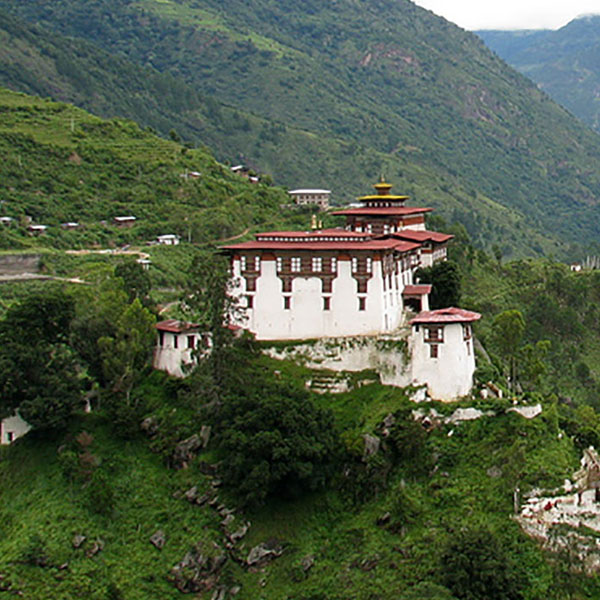
Places to visit in Lhuentse
Lhuentse is located in the northeastern region of Bhutan and is popularly known as the Kurtoe Valley. The valley is also the ancestral homeland for monarchs of Bhutan. The region is renowned for their art of weaving distinctive textiles called the Kishuthara which is famous throughout the country and today it is also gaining popularity among the foreigners too. The landscape of the valley is extravagant with impenetrable conifer woods and bare cliffs hovering over the valley. Lhuentse also acts as the biological corridor that connects three major national parks in the country. The Wangchuck Centennial Park in the north, Bumdelling Wildlife Sanctuary in the east and Thrumshingla National Park in the South are all connected through the corridor.

Khoma village
The traditional weaving skill of women in this village of less than 80 households is unparalleled. It is a skill passed on for generations. Textiles sourced from this village are highly sought after in the country and are generally sold at a premium. The village is popularly known for its intricately patterned silk textile known as the Kishuthara. Kishuthara is generally used as Kiras (traditional dress for women). Bags and other products are also produced using this beautiful textile.
Weaving Kishuthara takes immense focus and concentration and usually takes about a year or two to finish a piece. This exclusive ability to produce such beautiful textiles has accelerated the improvement in living standard of the village as compared to other community in the district.

Takila Guru Statue
The 157 feet bronze statue of Guru Nangsey Zileon sits atop a hill in Takila in Lhuntse District. The statue is approached by a gradual ascent of motor road built navigating through the community paddy fields and traditional houses. The approach is as scenic as the destination, especially when the terrains are transformed into a golden color paddy field. Upon arrival at the site, the meticulously sculpted statue greets the visitors and the view of the valley below is quite spectacular.
As prophesied, the statue was built to promote stability, peace and prosperity in the country and around the world. The giant statue houses a three storied temple. Since its consecration, it has attracted local and foreigner devotees to the site which has helped the community grow economically. Few farmhouses have started a bed and breakfast service offering travelers an authentic overnight stay experience in this quaint village.

Lhuntse Rinchentse Dzong
Lhuentse Dzong also known as Lhuentse Rinchentse Dzong is situated on a hilltop overlooking the Kuri River below. The founding of the Dzong is credited to Lam Ngagi Wangchuk a Buddhist master who meditated at the site for many years in 1551 and later built a small temple and named it as LeyLey Dzong (Fortress of the Goat) as legends has it that before building the Dzong a white bleating goat was seen at the site which the Lama took as an auspicious omen and named the Dzong after the auspicious goat. Later the Small Dzong was expanded and built into larger structure by Trongsa Penlop, Mingyur Tenpa in 1654. A bronze statue of Buddha of long life is main sacred relic of the Dzong.
The Dzong is used as the district administrative office and houses about 100 monks. The Dzongs does not generally have many tourists visiting the Dzongs so the ones who make the effort will be awarded with complete freedom to explore the Dzong and the monks are quite friendly and welcoming.







